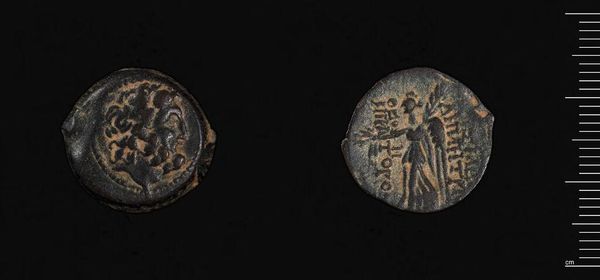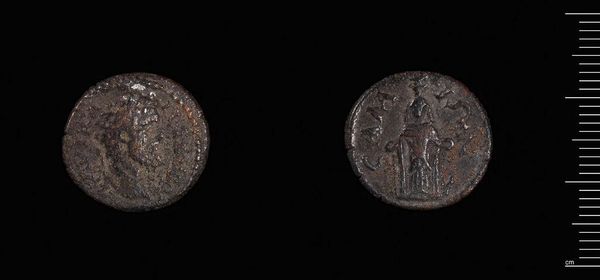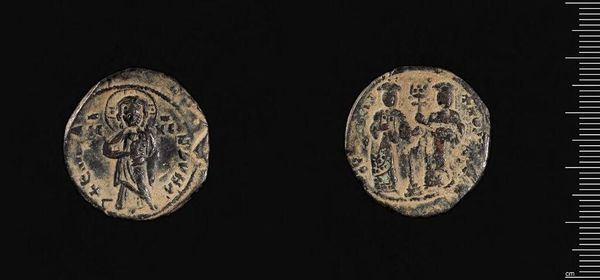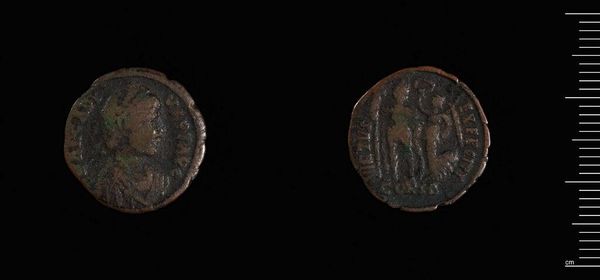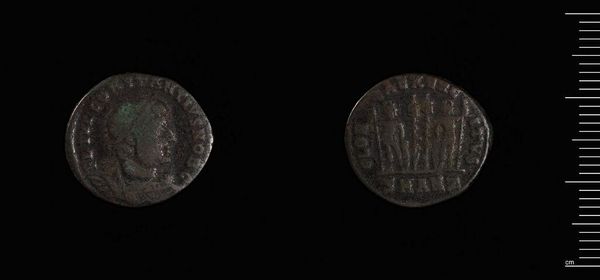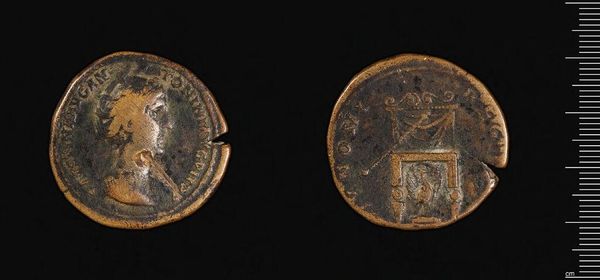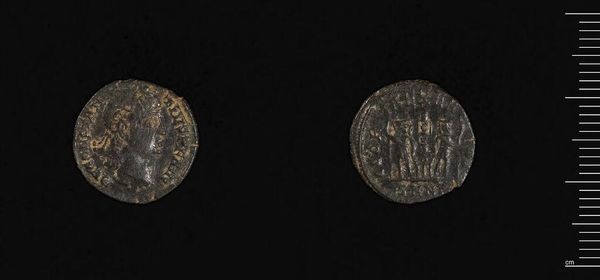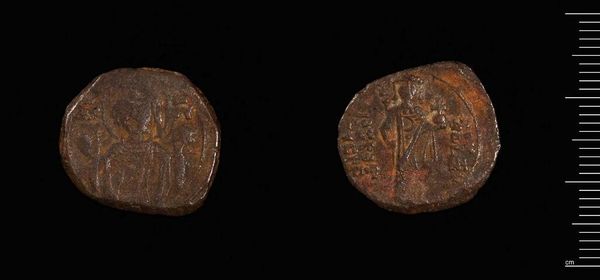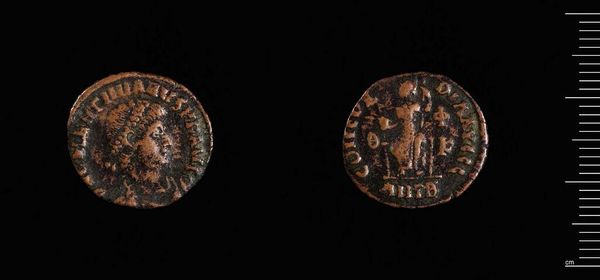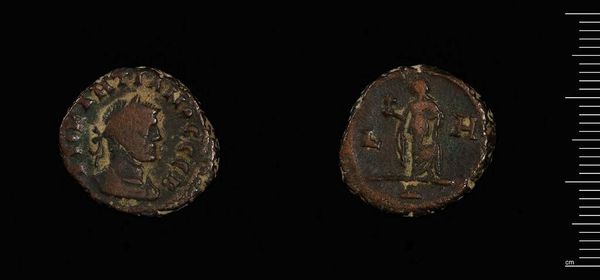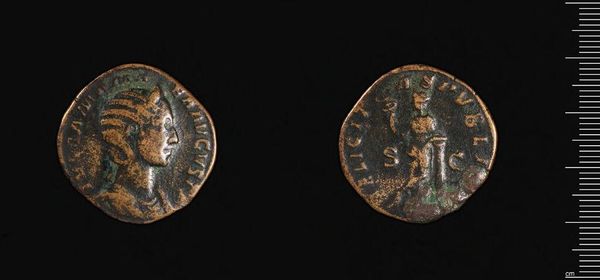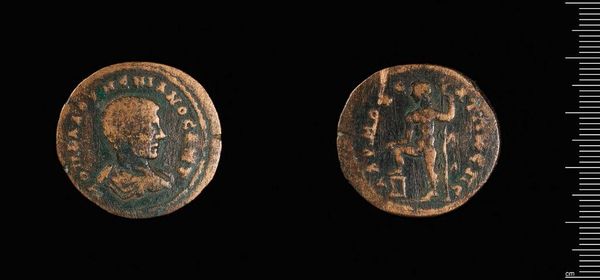
Dimensions: 2.36 g
Copyright: CC0 1.0
Curator: The "Follis of Constantine I, Antioch," reveals an intriguing glimpse into ancient monetary art. What strikes you immediately about this piece? Editor: Its worn texture and earthy tones suggest a tangible link to the past, a silent witness to history. Curator: Indeed. Coins like this served not only as currency but also as potent symbols of imperial power. The portrait of Constantine I, for example, embodies authority through carefully rendered details. Editor: And the imagery on the reverse, what does it signify in the broader context of Constantine's reign? Curator: Ah, it depicts the Genius of the Roman People flanked by personifications of the cities, a powerful visualization of unity and prosperity under his rule. Each element, from the inscription to the figural composition, reinforces the emperor’s message. Editor: A small object, yet it speaks volumes about the politics and aesthetics of its time. Curator: Precisely. It's a compelling artifact, inviting us to consider the multifaceted role of art in shaping perceptions of power. Editor: It prompts reflection on how meticulously crafted images, even on such a minute scale, played a crucial role in shaping collective identity.
Comments
No comments
Be the first to comment and join the conversation on the ultimate creative platform.
